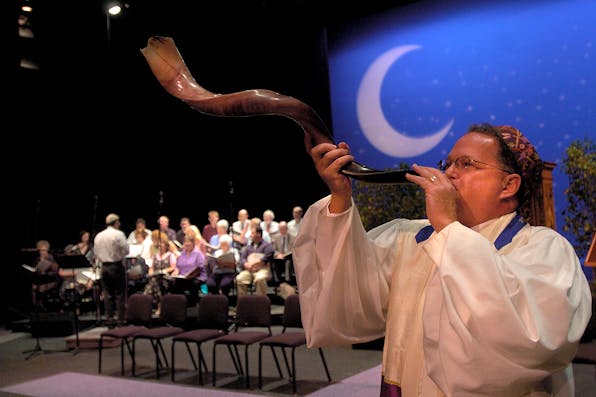
September 2018
The New High Holy Days
What happens when, once a year, the urge to accommodate every consumer fashion meets massive Jewish cultural illiteracy?
It’s long been a given that American Jews who rarely if ever attend religious services throughout the year come to synagogues in droves on the High Holy Days. To enlarge their sanctuaries, synagogues open movable partitions; to accommodate even greater throngs, they may hold “overflow” services in their social halls, in rented theaters or, when necessary, in large tents. When even these prove insufficient, enterprising rabbis open “mushroom synagogues” that like their namesakes pop up briefly in the early fall and disappear just as quickly.
This surge in worshippers—some congregations experience a ten- or even twenty-fold increase over attendance on an average Sabbath—is simply taken for granted. Yet it’s actually quite a remarkable phenomenon. True, Rosh Hashanah (the Jewish new year) and Yom Kippur (the day of atonement), also known as the Days of Awe, represent the most intensely religious period on the Jewish calendar, and many Jews undoubtedly resonate to their emotional pull. But the days also feature the calendar’s most demanding services, with Hebrew prayers that are not only lengthy and (deliberately) repetitive but are all but incomprehensible to the large majority of non-Orthodox Jews. A further potential impediment is the prayers’ theology, which presents a conception of God alien and certainly discomfiting to many moderns.
Reinforcing this intimidating image of the days’ religious experience are the sharply negative stereotypes of it purveyed in movies, television, and other popular media. These typically portray masses of Jews trapped in cavernous halls, there to endure endless services that mean nothing to them while rabbis and cantors drone on, oblivious of their congregants’ somnolence. In the runup to each year’s High Holy Days, op-ed writers also take pleasure in depicting the experience as, in a few random quotations, a “slog,” “totally disconnected from the real world or [from congregants’] real lives,” and guaranteed to bore both children and parents “out of their minds.”
Responses to September ’s Essay

September 2018
What’s Wrong with Nostalgia for Judaism’s “Millennia-Long Tradition”
By Lawrence A. Hoffman
September 2018
Jack Wertheimer’s Critique of American Synagogues is On-Target—and Woefully Off
By Elliot Cosgrove
September 2018
The Price of Modernizing the High Holy Days
By Christine Rosen
September 2018
American Jews: Doomed to a Thin Culture with No Future?
By Jack Wertheimer